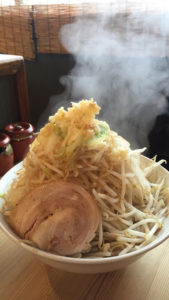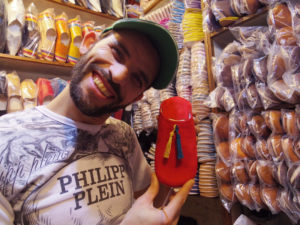
I am a licensed property broker but occasionally offered the work for the trainer who teaches the multicultural management in large Japanese corporations.
I do enjoy working as a trainer because interaction with students (workers at large corporations) is always inspiring.
Today I am going to depart from the real estate and write a light note about one of my favorite TV shows in Japan and try to give you kind of funny way of multicultural management tactics in Japan.
First of all, I don’t usually watch TV.
Why ?
1. Don’t have time to watch.
2. don’t want to spend my precious time on silly programs.
3. Generally speaking, quality of TV programs in Japan has been deteriorating significantly over years and there is not many program worth watching. (Maybe I am just getting old ?)
And yet, I do like one documentary show called ‘Youは何しに日本へ?’ (Why did you come to Japan ?) broadcasted by TV Tokyo every Monday from 6:55 pm.
(Please check your local station which is affiliated with TV Tokyo if you live
outside Tokyo)
In this show, TV Tokyo crews interview foreigners at the airport where most visitors first arrive in Japan, with no appointments. Not just at the airport, sometimes at sea ports or events, everywhere crews go there are on-the-spot interviews with no appointments (so they say anyway)
And they often find a treasure trove of funny and interesting foreigners.
It is a new type of TV document variety show with many unexpected things.
They asked tourists for the interview on the spot. It could be half-staged but looks pretty real.
Dozens of foreign tourists are interviewed and eventually a couple of persons or group are picked up
for detailed interview.
Selected tourists for in depth interviews are usually Otaku (geeks) type of people and not usual tourists.
They come to Japan for variety and yet very intriguing reasons such as eating okonomiyaki (Japanese pizza), seeing host family in Japan, learning ‘No’ play (traditional masked dance-drama)
4-day training camp of “Kenbu Tenshin-Ryu” (traditional martial arts), kimono gigs, Japanese swords fan etc etc. One episode is about a woman from America and she’s a big fan “Sailormoon” and has come to Japan to become a voice actress.Comment: I am always surprised that Japanese culture and anime are giving such big impact to many foreign people.
Anyway , with those staff make the appointment to see later days, they travel together all around Japan for whatever the purpose of his or her trip is and of course, everything during the travel
is shot by the video camera.

I illustrates one episode which was aired on March 5, 2018.
They grab a dozen of people at the air port as usual at the airport.
They are naturally from all over the world.
America, France, Australia, Germany etc.
First, staff interviews two guys from France.
They are NIKE sneaker otaku and came all the way to Japan from
Paris to find a rare pair of NIKE sneakers which they can only find
in Japan.
According to these French guys, apparently NIKE in 70s was manufacturing
sneakers in Japan and those NIKE sneakers made in Japan are their target
for the trip.
Sneakerheads pay hundreds and sometimes thousands of dollars for sought-after pairs.
It looks like sentimental value and hype drive up prices and make them feel it is worth while to travel all the way to Japan from France just for a couple of pair of sneakers.
And then, they interview very fashionable dandy four gentlemen who came from San Diego to eat “real ramen” in Japan !
The age gap among four American gentlemen looks pretty big.
Comment: Japanese do care about the age due to the Confucian sense of seniority
which is inherited for a long time. We do know asking age is not very polite
especially to women but it is essential to know the age of your counterpart as we
even change the tone and manner of the language according to the seniority.
And their backgrounds are all very different.
One guy is an officer of the Chicago police department and another is a firefighter in the San Diego fire department.
Such mysterious four people came to Japan for ramen journey ??
The next day, when they meet in Shibuya, one Dundee American who stands out most in the center district of Shibuya.
He is apparently a leader of 4.
The leader dress very well (please see TV Tokyo web site below)
and does not look like a ramen otaku.
The leader speaks pretty good Japanese and interacts with crews without any problems in Japanese
without problems..
Other three members do not much about Japan and Tokyo,
Surprisingly they decided to head for Shimbashi from Shibuya.
Comment: Shimbashi is well-known among Japanese for salary men’s place
where tired and miserable office workers go out after work
for drinks and whining about their bosses.
So for those who want to have a first date with a Japanese woman
don’t go to Shimbashi!.
Although it was a ramen trip, it seems they have not done any research in advance which ramen shop they want to go.
They have chosen a ramen shop on the spot.
Comment: It is quite surprising that they have not conducted any research.
Any way, they went to a Chinese food restaurant called “Tenkaichi”
which is by accident of the ramen community promotion boasting 40 years of foundation!
Interesting part starts here with how to eat ramen properly.
Those who know how Japanese eat any noodles may have already guessed.
Yes, Japanese slurp up noodles !
and usually sip the soup with noise.
The leader was teaching others how to eat ramen and told them
it is even better to make noise in Japan.
But others can not quite get it!
They cannot slurp up and eat ramen as pasta any way.
Comment: Only few Japanese people know that majority of foreign people can not
slurp up noodles. And majority of Japanese people are not familiar with
the detailed western table manner (not well vested in the western table manner)
Food and table manner are deeply influenced by the long cultural history, please
try not to judge these by face value even if you feel uncomfortable.
They ended up with mess. One of them eats ‘tsukemen’ which is ramen noodles
with a warm dipping broth.
But he does not dip ramen into broth and eventually poured
the broth soup into noodle. what a mess !
Comment: We are often amazed by the way foreigners eat Japanese foods.
They are sometimes very creative but it looks usually very funny and odd to us.
On the second day, four gentlemen dress like high school girls.
(See a picture in web site)
Comment: In Japan, usually men don’t wear skirts at any occasion.
They eventually head for the long-established sports club called “YC & AC” in Yokohama, established
by a Scottish gentleman in 1868.
It happens to be the 150th anniversary for “YC & AC” foundation!
Established in 1868 as the Yokohama Cricket Club (YCC), YC&AC is Japan’s oldest sports and social club.
And the general manager at the club eventually tells crews
that four gentlemen from Unites States is a member of the “World Champion” of Scottish Bagpipe!
Actually, it was not just a ramen trip for four gentlemen.
They were invited by the club as a special guest at the 150th anniversary party to perform Bagpipe live in Yokohama.
Comment : I did not know about the club.
Yokohama traditionally has been one of the biggest sea ports and welcome a lot of foreign people.
Japanese people also associate Yokohama as a trendy spot.
That is why Yokohama is always popular among young many generations
for a long time.
There are lots of Scottish people who participate in the party to listen to the tone of Scotland from the motherland in the venue!
To the last, the leader says “We will go anywhere in the world if we are to preserve the traditions of our motherland and to convey wonderfulness!”.
Comment: We admire the tradition and the long history. That is why a lot of companies web sites often start with
their history not their products and service.
TV Tokyo Why did you come to Japan ?
Multicultural management in Japan
Lastly I would like to leave some comments about multicultural management in Japan.
In Japan, for good communication, you need to understand the skill for ‘high-context communication’ and the concept of ‘uncertainty avoidance’.
First, you need to master the skill for high-context communication. What is high context-communication ?
From Wikipedia
“High-context culture and low-context culture are terms used to describe cultures based on how explicit the messages exchanged are
and how much the context means in certain situations.”
This concept was first studied by a renowned American anthropologist, Edward T.Hall.
I also want to quote from a book called ‘Culture Map’ by Ms. Erin Meyer from INSEAD about communication style of Japanese people.
“In Japan, we implicitly learn, as we are growing up, to communicate between the lines
and to listen between the lines when others are speaking. Communicating messages without saying them directly is a deep part of our culture,
so deep that we do it without even realizing it. In terms of context culture, the United States is the lowest-context culture
in the world and Japan has the highest-context culture in the world.
“Beyond language, the history of a country strongly impacts its position on the Communicating scale.
For an example, just think for a minute about the histories of the two bookend countries on the scale, the United States and Japan.
High-context cultures tend to have a long shared history. Usually they are relationship-oriented societies where networks of
connections are passed on from generation to generation, generating more shared context among community members.
Japan is an island society with a homogeneous population and thousands of years of shared history, during a significant portion of
which Japan was closed off from the rest of the world. Over these thousands of years, people became particularly skilled at picking up each other’s messages
— reading the air.”
Japanese people (and other Asian people to some extent) are very sensitive about the subtle nuance in communication.
By contrast, for example, the United States, a country with a mere few hundred years of history, has been shaped by enormous number of immigrants with various backgrounds.
Because people had little shared context, Americans learned quickly that if they wanted to send a message, they had to make it as ‘explicit’ as possible.
Please try to listen to what is meant instead of what is said. Please ask more clarifying questions, and make an effort to be more receptive to body or facial cues.
In Japan, you need to be a good listener to become a good communicator. Catching the subtle message is a key for success in communication with Japanese.
Second point of communication with Japanese is uncertainty avoidance.
This concept came from Dutch Professor Geert Hofstede. He conducted one of the most comprehensive studies in global IBM offices
on national values, introducing the dimension paradigm.
Uncertainty Avoidance has to do with the way that a society deals with the fact that the future can never be known.
Japan is one of the most uncertainty avoiding countries on earth. You could say that in Japan anything you do is prescribed for maximum predictability.
Life is highly ritualized and ywe have a lot of ceremonies. At weddings, funerals and other important social events, what people wear and how people should behave are prescribed in great details.
In corporate Japan inc, a lot of time and effort is put into feasibility studies and all the risk factors must be studied before any project can start.
This high need for Uncertainty Avoidance is one of the reasons why changes in Japanese companies are so difficult to realize.
Naturally, this character often generates side effects such as slowing the decision making process and strong tendency towards risk aversion, however, I believe
Japanese people are also very pragmatic in many cases. Therefore when you are dealing with Japanese people or corporations, I suggest that you listen
to them and better understand their intention first. And try to share the same concern with them. If you find they are just trying to be very Japanese i.e.
being prescribed in details, show your understanding the situation first and then propose a suggestion to change.
This way, they should feel much more comfortable with you rather than
you insisting on your western or non-Japanese way.
Please bear in your mind that Japanese people(as well as other nationalities) have taken their own ways of life for granted, ignoring the vast,
international cultural community that surrounds them for a long time.
Conclusion
Having said that, EVERYTHING is relative. And the communication style highly depends on the character of each person as well.
Therefore the best strategy is just being agile or flexible in communication with Japanese.
Beyond Culture by Edward T. Hall
Culture and Organizations by Geert Hofstede
High context and Low context culture wikipedia
Toshihiko Yamamoto
Real estate investing consultant and author.
Toshihiko is currently writing a book about the real estate investing in Japan
for foreign investors. About the book
Founder of Yamamoto Property Advisory in Tokyo.
International property Investment consultant and licensed
real estate broker (Japan).
He serves the foreign companies and individuals to buy and sell
the real estates in Japan as well as own homes.
He holds a Bachelor’s degree in Economics from
Osaka Prefecture University in Japan
and MBA from Bond University in Australia

